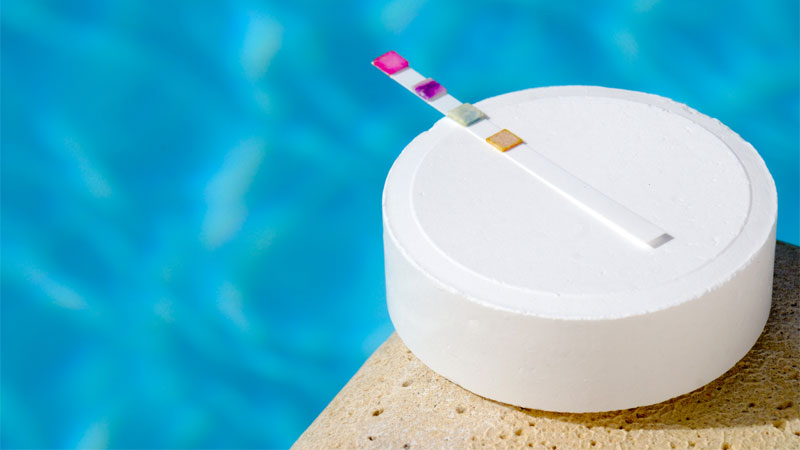Updated on January 3, 2022
Are you a new pool owner and unsure of the amount of chlorine to add to your pool? No worries, all you need to do is know your pool size, how many gallons of water are in it, and check the chlorine levels with a test kit before you get started.
When adding chlorine to a pool, you have to remember to keep the levels within a range of 1 ppm- 3 ppm of chlorine. The exact amount needed for your pool will depend on the amount of existing chlorine in the water, 1 ppm-3 ppm range, and the size of the pool.
You’ll calculate how many gallons the pool has of water, using a chlorine test strip, and then add a calculated weight of chlorine tablets.
See Also: 33 Eye-Catching Pool Ideas
Chlorine Products and Tools
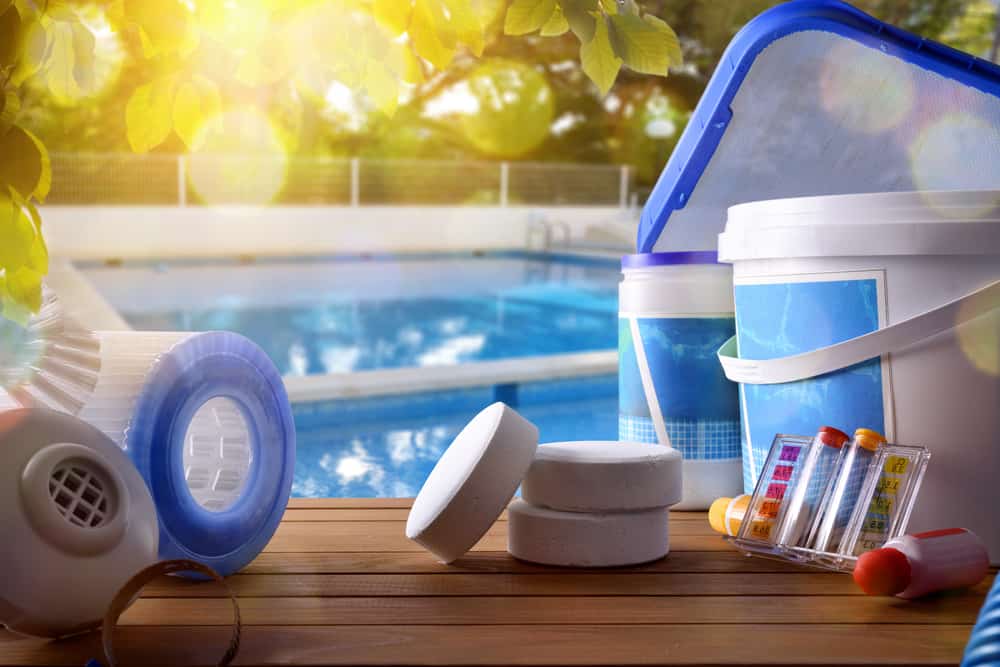
There are more chlorine products than you can shake a stick at, so I won’t mention any specific brands.
Sanitizer
There are several different types of pool sanitizers to choose from, such as chlorine, Calcium Hypochlorite, and Sodium Dichlor
Chlorinator
A Chlorinator, also called a chlorine dispenser, is used to dispense chlorine into the pool water, you fill it up with tablets or chlorine granules. Instead of adding the chlorine manually, the tablet, etc. is dispensed automatically. They also have salt chlorinators
Chlorine Granules
Chlorine granules are pieces of chlorine that you add to a dispenser, just like tablets.
Chlorine Tablets
Chlorine tablets are portioned tablets of chlorine that you add to so many gallons of water.
Pick your chlorine product of choice and help keep your swimming pool clean and sanitary with the proper 1 ppm- 3ppm range of chlorine. A chlorine few tablets and you’ll be on your way to a well-earned siesta.
Ingredients in Chlorine
Given that chlorine is strong and can cause serious injury if mishandled, you probably want to know what’s inside of it.
Cyanuric Acid
This is also referred to as a chlorine stabilizer or a pool conditioner. It’s used to restore the ph level of the pool water and help improve the water quality.
Always read the instructions before handling any chemicals.
Sodium Hypochlorite
The active ingredient in Chlorine is Sodium Hypochlorite, commonly referred to as chlorine gas. Given how strong of a chemical this is, read the instructions carefully before handling it, your health depends on it.
You might not work for OSHA, but you should still know what’s in your pool water.
How to Check the Chlorine Level in Your Swimming Pool
Before you start handling pool chemicals and affecting the water quality of your pool, you need to determine how much chlorine is already present in the water.
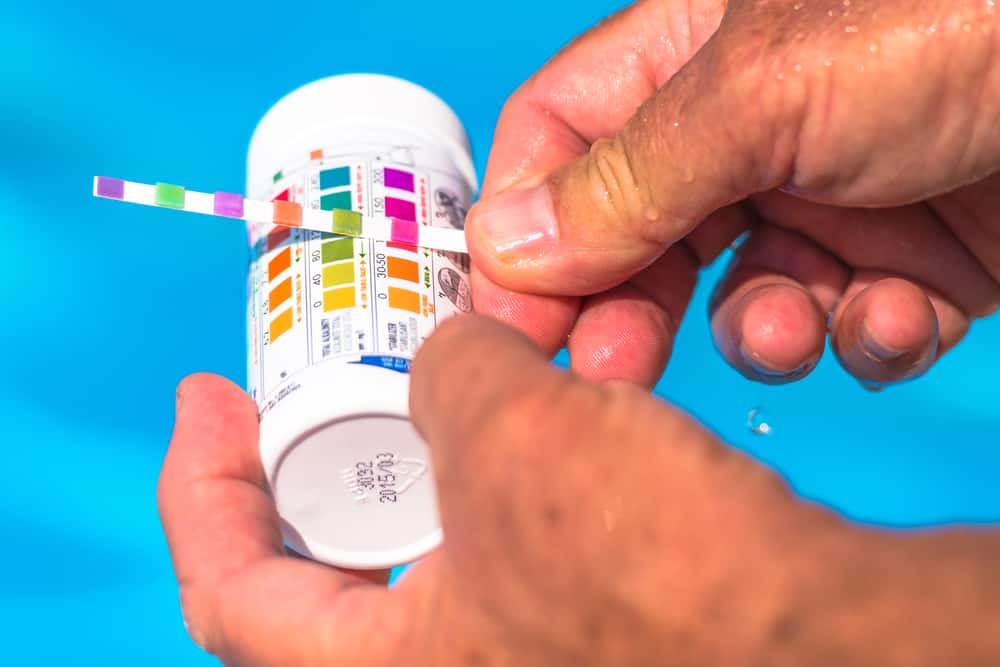
Pool Size
First, you need to determine the size of the pool, assuming it’s not a gallon kid-size pool.
All you need to do is multiply the length, width, and average depth, and then multiple that by 5.9 for a round pool, 6.7 for an oval pool, or 7.5 for a rectangular pool.
So, for a round pool it’d look like:
Length x Width X Average depth x 5.9 = Number of gallons of pool water
Adding Chlorine
When adding chlorine to a pool, you calculate the size of the pool and use the equation above to determine how many gallons it has. Once you’ve done that you can begin figuring out how many chlorine tablets you’ll need.
The ratio of chlorine to a gallon of water is 1 ppm-3 ppm for every gallon. 1 ppm is approximately 0.000013 ounces, so you’d multiply the number of gallons of water in your pool by 0.000013 ounces (1 ppm) to get the amount of chlorine to add.
Why Chlorine is Added to Pool Water
The water quality of your swimming pool can vary greatly depending on the chlorine level, the number of bacteria and other microorganisms, and the ph levels.
The water quality in a swimming pool, especially one that just got filled, isn’t very good. It needs the old 1 2, otherwise known as a shock treatment.
The shock treatment kills off harmful bacteria and other microorganisms that exist naturally in the water. Just think of one of those slimy outdoor hot tubs, if you want an idea of what you’re trying to prevent.
Swimming season is only fun if you have a swimming pool with the proper pool chemistry, so check that ph level and keep a chlorine tablet nearby.
When to Check the Chlorine Level
The chlorine level of your pool water can fluctuate based on several different things, such as storms, UV rays, etc.
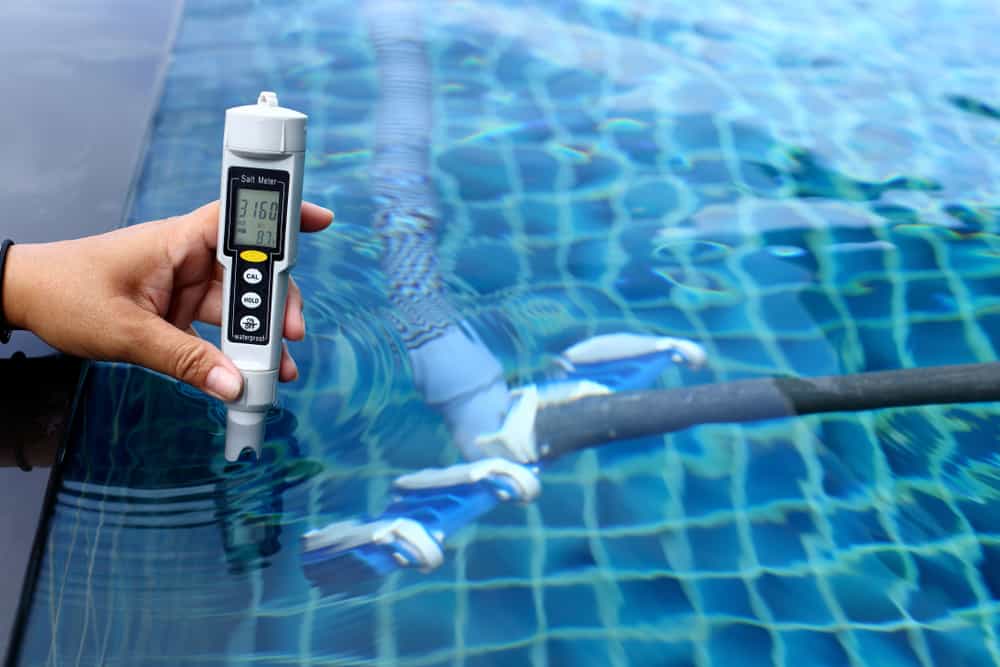
Ultraviolet Rays
If it’s been especially sunny for the past few days, then you might want to check the chlorine levels in your pool water. UV rays cause the chlorine levels in a swimming pool to drop, so monitor them closely.
Remember to use a chlorinator when checking the chlorine levels, you can’t use the chlorine smell to indicate if the swimming pool needs more added.
Weather
After a storm, you’ll want to check the chlorine level to make sure it’s where it should be. Heavy rainfall can diminish the chlorine levels of the pool and change the chemistry of the water.
Keeping a swimming pool operating safely requires constant upkeep, but you can give thanks to yourself when you’re lounging poolside in the sun. It doesn’t require a great depth of knowledge to get it done, only a one-track mind focused on water quality and health.
Swimming Pool Maintenance
Keeping your pool clean can seem like never-ending maintenance, but the amount of effort put in will pale in comparison to the fun experiences you have swimming in the pool.
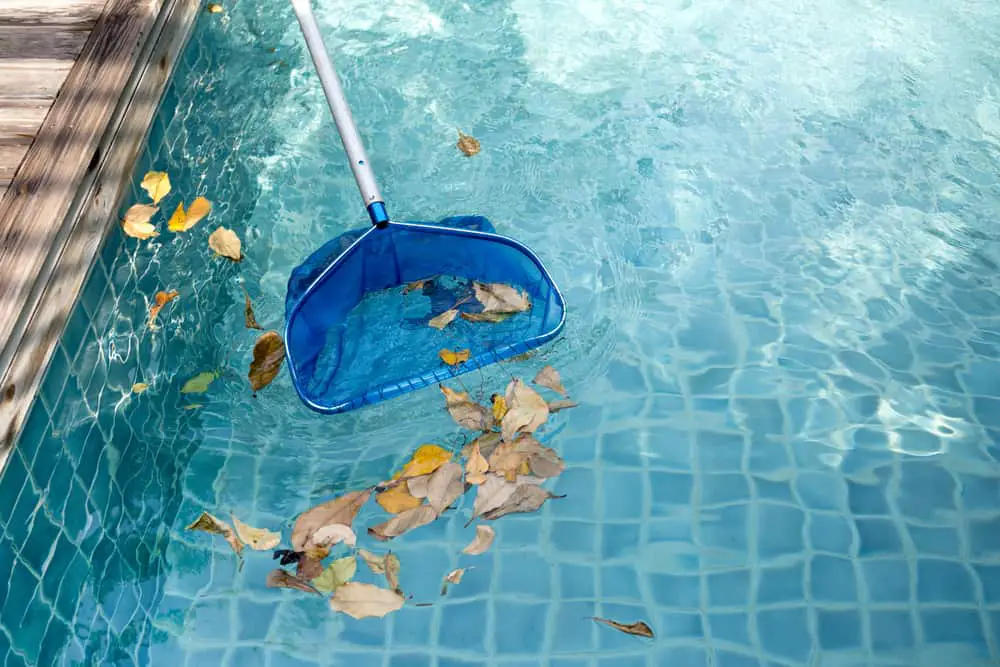
Change the Pool Filter
A great way to keep pools clean and is by keeping your pool filter clean. Replace it every six months at the most.
Check the Chlorine Level
Pool water can easily fall out of balance and need to be brought back into a healthy and safe range with chlorine tablets and possibly some chlorine conditioner.
Keeping your water at a safe level is critical for anyone’s health that swims in the pool.
Clean Your Pool Liner
Your pool liner can get stained and worn from the chemicals, primarily chlorine, that are put in the pool water to help maintain the ph level and kill bacteria.
Keeping your pool liner clean will help it last longer and prevent it from needing to be replaced as soon.
Skim the Pool
Keeping the swimming pool clean means taking the time to keep debris out of the water. Use your skimmer basket regularly to ensure the pool water stays clean.
Skimming a pool is pretty easy, it only takes a few minutes and it’s an excuse to put on your swimsuit. If you don’t like skimming a pool, then buy one of those pool vacuum bots that they sell, they look cool and you can feel like a hotshot.
Hire a Pool Cleaner
If you’re uncertain of the amount of chlorine to add to your swimming pool, then hire someone and make sure it’s done right.
Remember to get an estimate of the price to add chlorine to your swimming pool, all you need to do is tell them the pool size.
Research More Ways to Keep a Pool Clean
There are a lot of people who provide in-depth instructions and the proper use of chlorine products and ways to keep your pool health in check.
Use Your Web Browser
All the assistance you need is only a few clicks away. There are countless articles and videos online that show you how to use tablets, what quantity to use, how to perform a shock treatment, and the order in which to do everything.
Always read an article in its entirety when you go to research ways to maintain chemical balance in a swimming pool. There can be all kinds of useful tips by fellow readers at the bottom in the comments section, assuming the article has one.
Check out other categories of pool maintenance, there are times when you can find just what you’re looking for in a similar article.
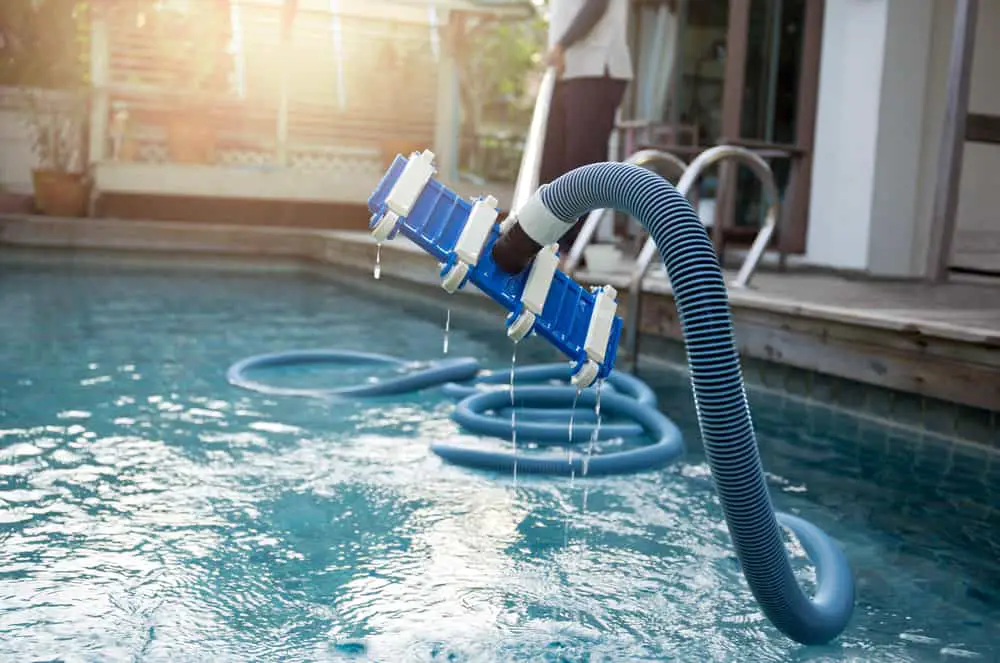
Maintaining a swimming pool, such as replacing the filter, using a chlorinator, adding chlorine tablets, and skimming the pool is a lot of work. Keep note of when you add chlorine tablets to the pool and the quantity that was used, you’ll eventually start to use your pool chemicals like a pro.

